How international grilling traditions and flavors are catching fire
By Sara Perez Webber
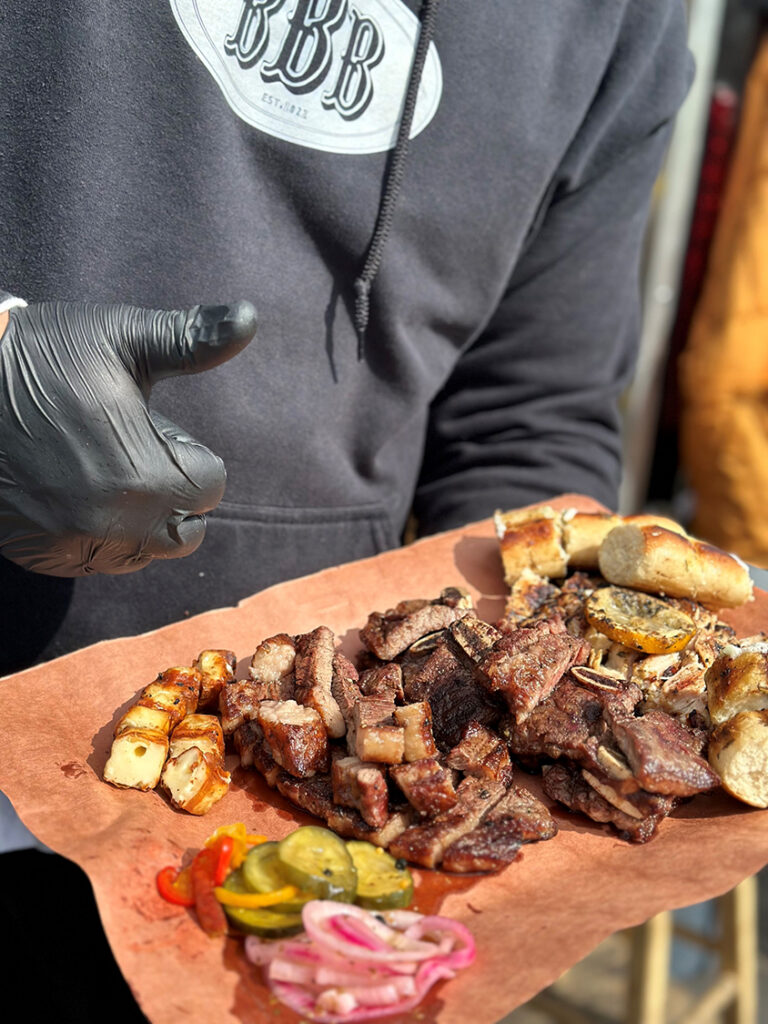
The smoke-filled air made it hard to see when Luis Leite and Iago Santana launched their Brazilian churrasco business in 2022. The brothers were grilling up a storm at their first gig on Father’s Day weekend at Charter Oak Brewery in Danbury, Connecticut. As the smoke dissipated, the seemingly endless line of customers came into view.
“We couldn’t believe it,” says Leite, co-owner of Brazilian BBQ Boys, who grew up attending many churrascos—backyard barbecues that were the staple of family celebrations—in Danbury’s large Brazilian community. “We were able to sell out on our very first day.”
Fast-forward two years, and the brothers have grown their business far beyond their side-hustle dream of five events annually. On more than 100 days last year, from their fully customized barbecue trailer, they served customers such favorites as picanha (top sirloin), Brazilian linguica (spicy sausage), asas de frango (marinated chicken wings) and Mom’s Recipe white rice (described by Leite as jasmine rice made with garlic “and a whole lot of love”). They sell their own rock salt, the traditional seasoning for grilled Brazilian meats. And they’ve branched out into private event catering, with several weddings booked for this year and next.
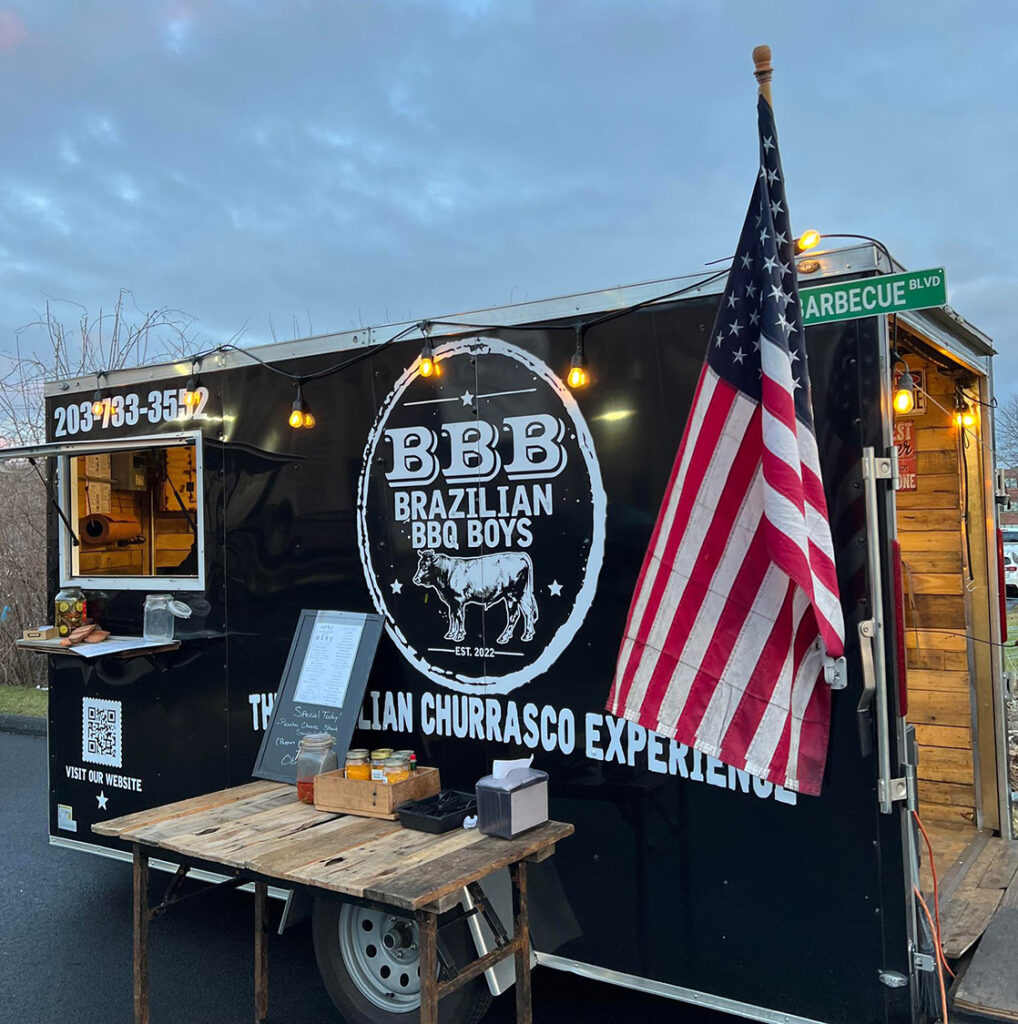
Across the country, more and more barbecue aficionados are seeking out globally influenced flavors and grilling traditions like Brazilian churrasco. In its 2024 What’s Hot Culinary Forecast, the National Restaurant Association ranked “International BBQ” number three on its top 10 overall trends list. Catching fire are styles ranging from Chilean and Argentinean asado to Japanese yakitori to Korean barbecue, says Helen Jane Hearn, the association’s senior director for enterprise programs.
“We’re also seeing flavor mashups from different cultures, like bulgogi tacos or curry-infused barbecue sauces,” says Hearn.
To find out how caterers are successfully tapping into this growing appetite, CFE reached out to four businesses who are expanding the borders of barbecue.
Shared Experiences
“Barbecue is more than just food,” says the National Restaurant Association’s Hearn. “It’s an experience shared with community.” That’s one reason customers love the Signature Service offered by Seoul Food Korean BBQ in Los Angeles.
“It’s fun,” says executive chef and founder John Bach, who owns Seoul Food with his wife Nataliia Bach. “People realize how communal it is because you have grills in the middle of the table. There’s nowhere else to look besides at the people that are around you. And it’s very Korean.”
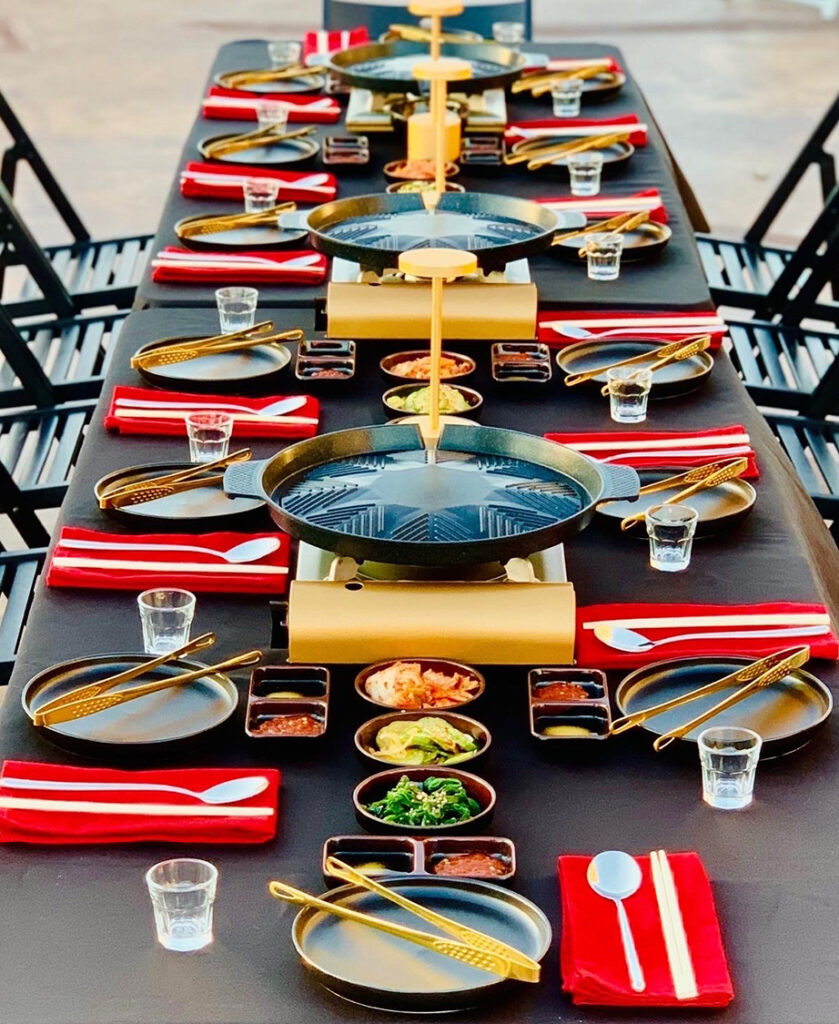
Modeled after a traditional Korean barbecue restaurant, Seoul Food’s Signature Service features Iwatani camp stoves topped with cast aluminum pans. Guests sit at the table surrounding the stoves while Bach or one of his chefs cooks the thinly sliced meats in front of them, serving directly from the grill to the plate.
The dinner includes four main meat options, such as prime ribeye steak, prime galbi marinated short rib, prime bulgogi marinated ribeye and honey marinated spicy pork. The high-quality meats are marinated up to 12 hours. Accompanying them are “the most comprehensive introduction of Korean sides,” says Bach, including three different types of kimchi with different levels of fermentation.
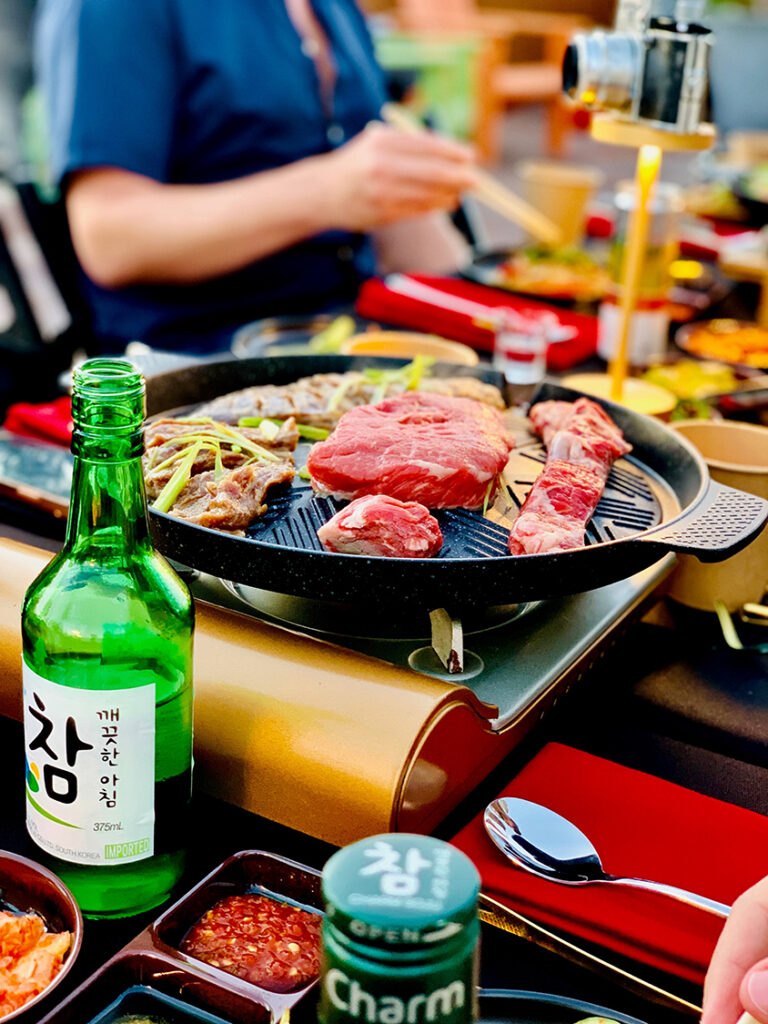
While Seoul Food also offers a high-end Omakase Service, usually plated, and a more budget-friendly Korean barbecue buffet option, it’s the Signature Service that keeps the company busy every weekend. In fact, the four-year-old firm just expanded its footprint, moving into a 4,200-square-foot standalone building in Los Angeles, complete with its own parking lot for trucks and guests. Plans include a tasting room with a full bar as well as a karaoke room. “It’s grown very fast,” says Bach.
A former professional musician, Bach used to have a tradition of taking his non-Korean musician friends out to a Korean barbecue restaurant on his birthday. When the COVID pandemic shut down restaurants as well as concert gigs, he started cooking Korean barbecue for friends at home, using family recipes. “I just knew what my mom had taught me,” says Bach, who was born in Korea and moved to Los Angeles as a child.
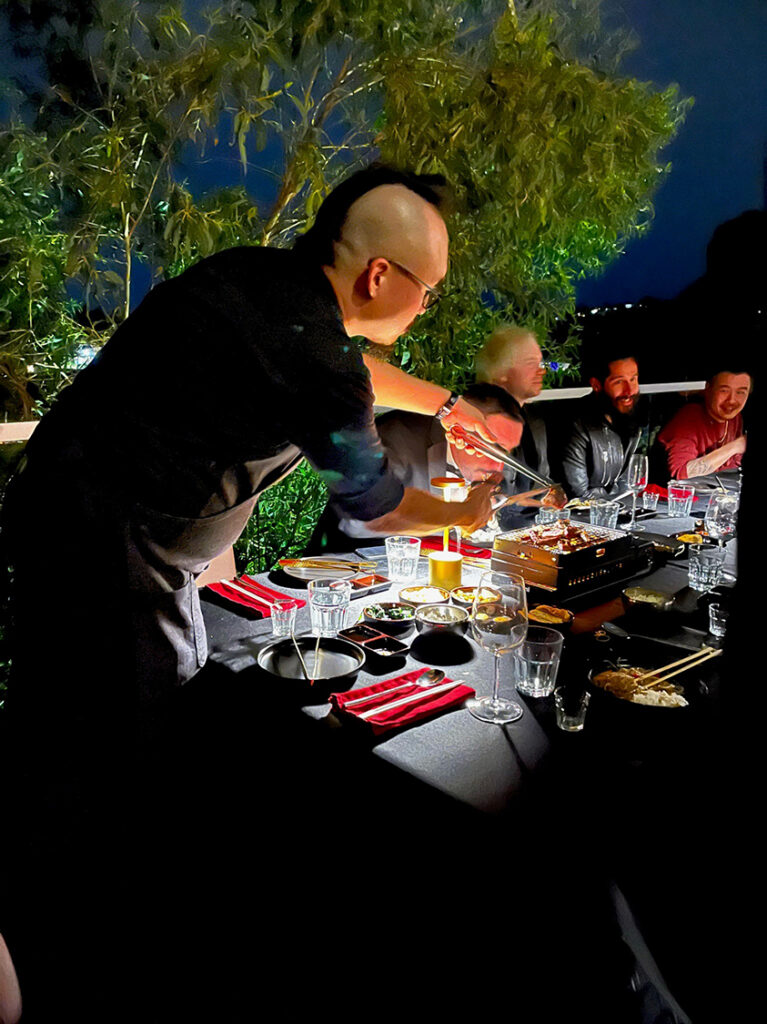
Word spread, and soon Bach was doing a brisk business in dinner parties, including for a handful of celebrity clients. Now offering full-service and drop-off catering, Seoul Food is booking a growing number of weddings, travels for events throughout Southern California, and is very popular for birthday celebrations.
“If it gets slow, we’ll do an ad campaign just pushing birthday searches, and we always get booked,” says Bach.
Filling a Niche
While attending a July 4th event in South Florida in 2013, Stacey and Jorge Lorea had an idea. “We realized there were no great food options other than burgers, hot dogs and pizza,” says Stacey. “We couldn’t help but imagine our favorite Argentine food at any public event and knew it would be a hit!”
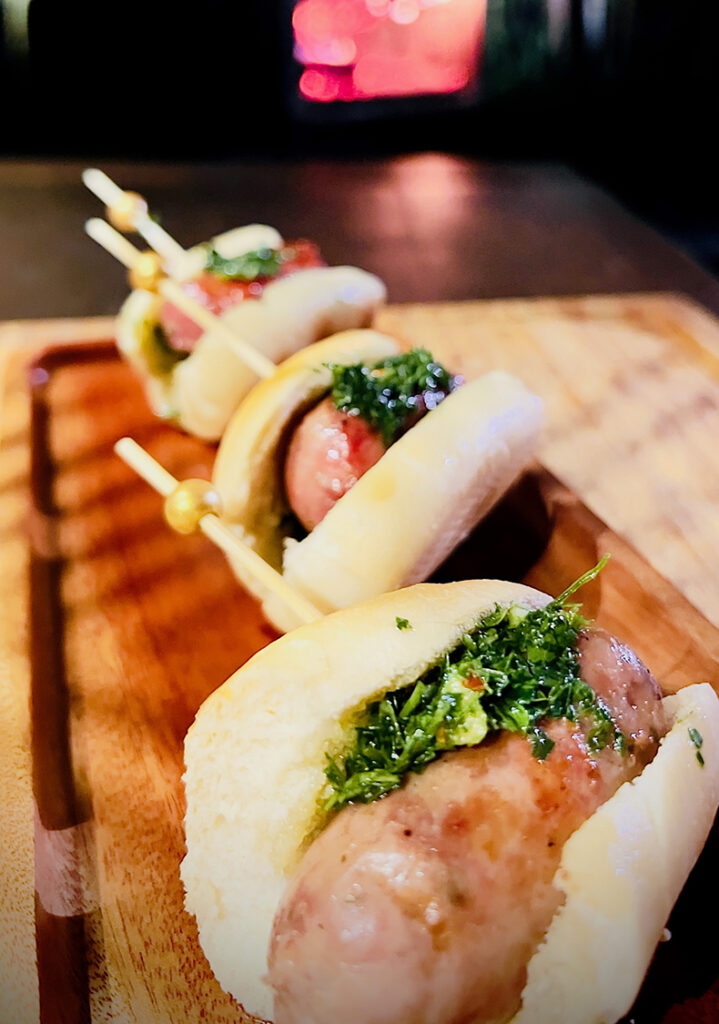
Natives of Argentina, the Loreas started out with an Argentine grill food stand at concerts and art fairs. “We saw the great response from everyone that tried our choripán [Argentine chorizo] and steak sandwiches, and knew we were onto something good,” says Stacey. So they made the leap and opened YC Argentine Steakhouse Catering, based in Fort Lauderdale.
“We are proud to say we have a big wedding following as we are filling a much-needed gap in the catering industry for outdoor weddings,” says Stacey. In addition to a rising number of corporate dinners and retreats, “our biggest growth is in backyard private events—birthdays, anniversaries, graduations and dinner parties with friends are booming.”
An Argentine parrillada, explains Stacey, is a typical gaucho tradition in most households in Argentina that includes “the ritual of making the fire, seasoning the meats and enjoying a glass of wine while the meats get perfectly grilled for friends and family to enjoy them. It’s sharing food, stories and laughter.”
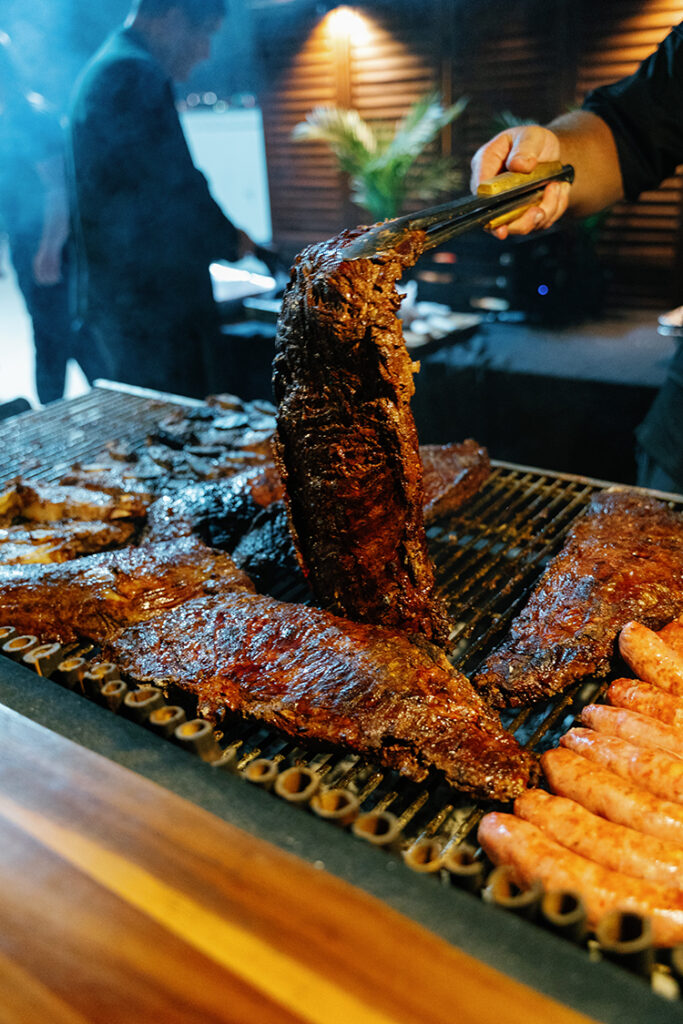
At a YC event, a parrillero, or grill master, prepares to order a wide variety of cuts of meat, sausages, sweet breads, and even cheeses and vegetables for the guests. The most traditional menu offered is the Gaucho Parrillada, including vacio (flank steak), chorizo Argentino, pollo al chimichurri (boneless chicken breast marinated in chimichurri sauce), morcilla (Argentinian blood sausage), mollejas (sweet breads) and tires de asado (short ribs).
“You will see guests interacting with the chefs, taking countless photos and videos, as well as getting tips and tricks from our parrilleros,” says Stacey. “One of our favorite parts is people’s reaction when they see the huge spread of beef on our big grills.”
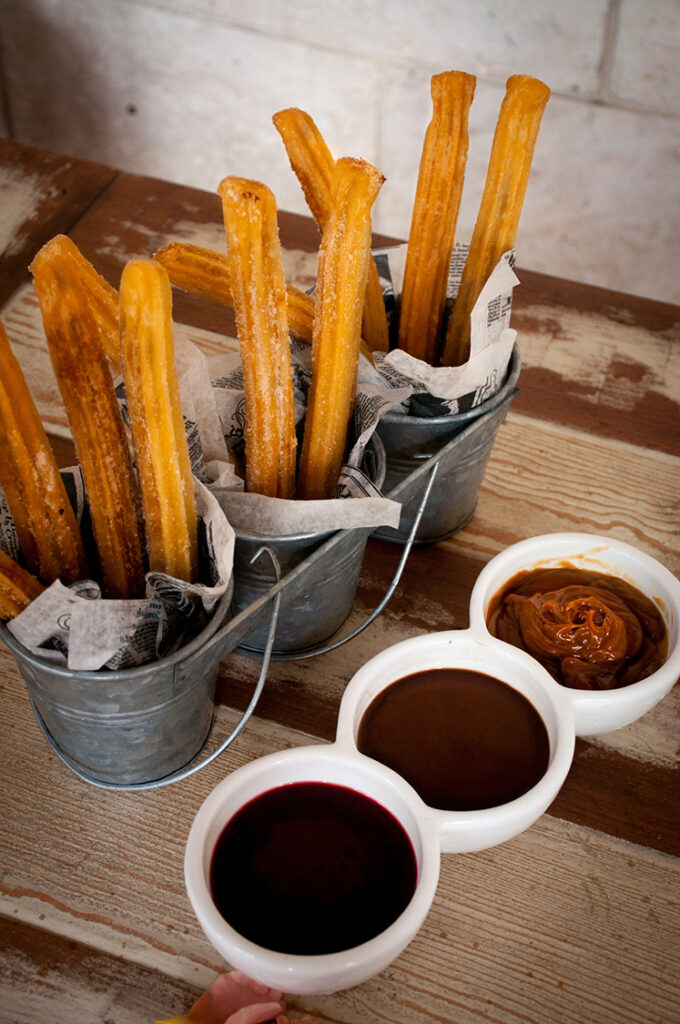
A Steakhouse Experience
Entertainment is also part of the appeal for customers of Pimenta Brazilian Cuisine in Los Angeles. “Our Churrascaria Experience is like having a steakhouse come to your private event,” says owner Marcelo Franzen, a Brazil native along with his co-owner wife, Maria Kanehira. “It is a unique and elevated experience. Most guests love to take pictures and post on social media.”
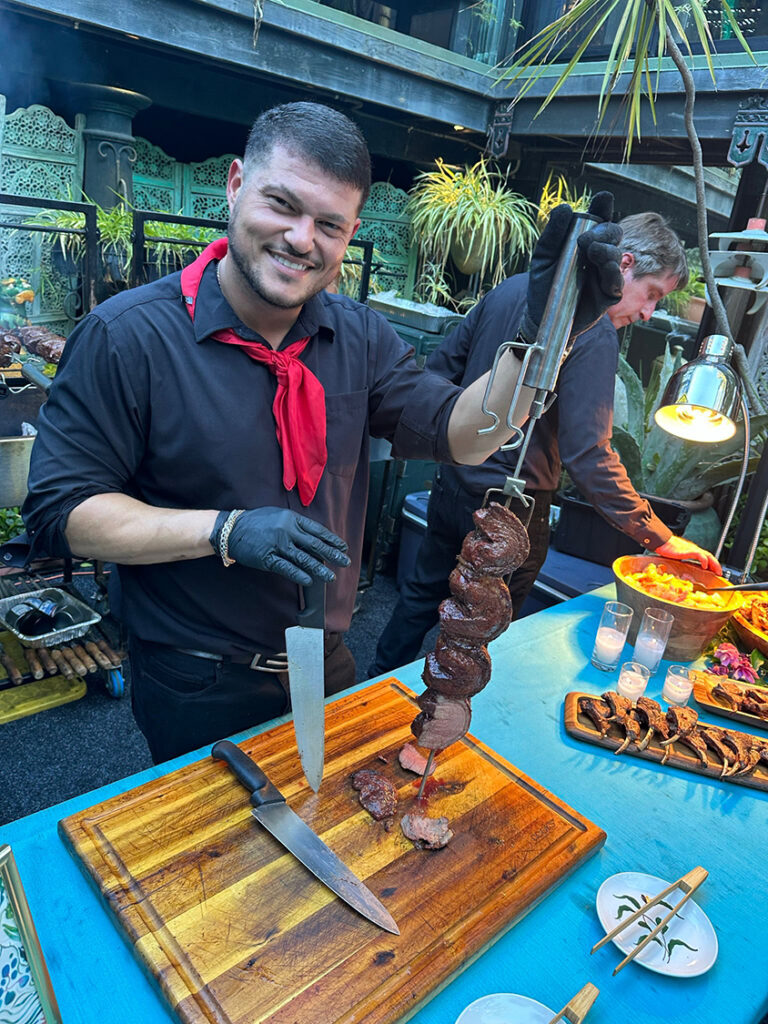
The Churrascaria Experience features Gaucho Table Service, in which servers continually visit the tables to slice meat onto guests’ plates right off the skewers. Pimenta also offers buffets and station-style service. For all three, the company sets up a barbecue pit and grills all the meat on site.
“Our most popular steak is the picanha, a unique Brazilian cut from the top sirloin,” says Franzen. “It is as tender as a filet mignon but has much more flavor due to the generous layer of fat that melts during cooking and adds a juiciness and extra tenderness.” Popular Pimenta sides include Brazilian white rice, black beans, mixed grilled vegetables and fried plantains, while the passion fruit mousse and coconut fruit salad—served in a coconut shell—top the list of most-requested desserts.

Wedding business is growing for Pimenta, and Franzen sees interest in Brazilian cuisine and churrascaria in Los Angeles growing right along with it. “Part of that is because Brazilian steakhouses in L.A. have become very popular, but we also notice a growing interest for good quality food in general,” he says. “It seems to us that people are changing their lifestyle and seeking good homemade food, and Pimenta is able to fit their needs in many aspects.”
Demand Going Viral
On the East Coast, the Brazilian BBQ Boys’ Santana has been astonished by consumers’ piqued interest in picanha. “The picanha has become a recognized cut of meat, so much so you can now find it in major grocery stores,” he marvels. “Ten years ago, you couldn’t find it unless you went to a Latin or Brazilian butcher shop.”
Santana attributes the demand in part to popular pitmasters on YouTube, who introduce their followers to different cuts of meat and grilling techniques. Leite and Santana, for example, are fans of Meat Church BBQ and videos by its CEO, pitmaster Matt Pittman.
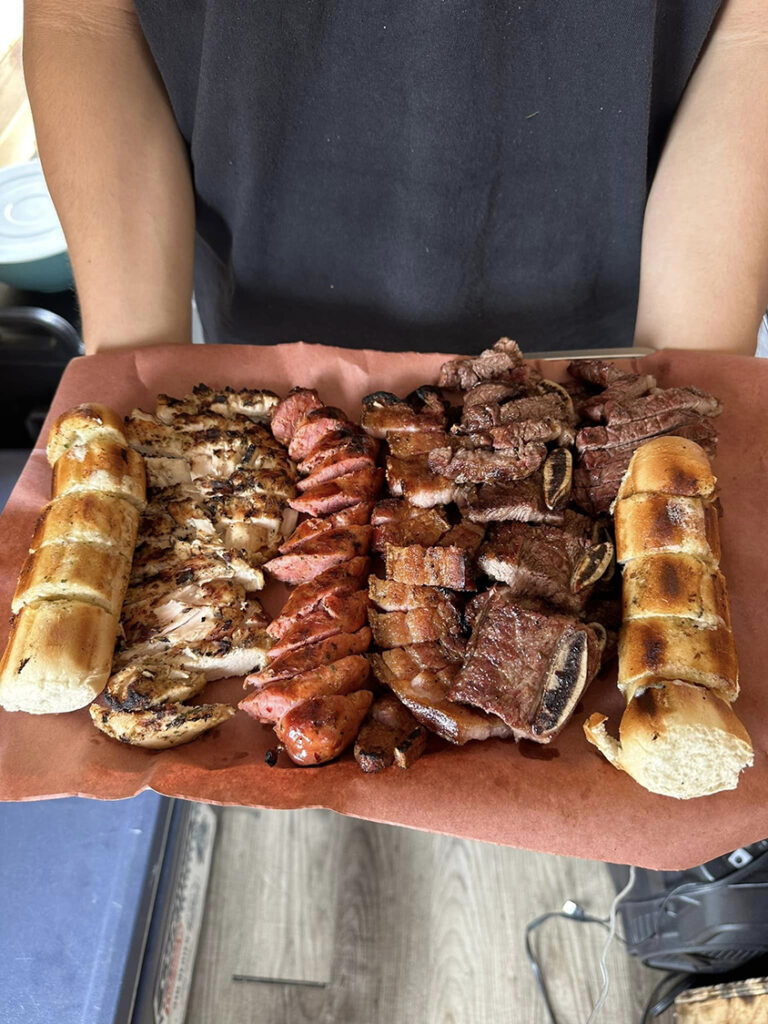
“There’s an exciting trend of two-way inspiration powered by social media,” affirms the National Restaurant Association’s Hearn. “In some cases, we’re seeing chefs inspire influencers to try new foods and seek out new experiences. Going the other way, chefs are seeing people post about falling in love with new things at home and are inspired to put their own spin on it.”
Introducing customers to the food traditions they grew up with is what it’s all about for the Brazilian BBQ Boys, whose fans often find them serving up their grilled specialties on the weekends at breweries, distilleries and vineyards. “The reports that we’ve been getting from the owners is that they are seeing completely new faces whenever we come around,” says Leite. “Wherever we go, we have the amazing opportunity to be the first time people try Brazilian churrasco.”
For More Information
Brazilian BBQ Boys
brazilianbbqboys.com
National Restaurant Association
restaurant.org
Pimenta Brazilian Cuisine
pimentabraziliancuisine.com
Seoul Food Korean BBQ
seoulfoodkbbq.com
YC Argentine Steakhouse Catering
ycsteakhousecatering.com










